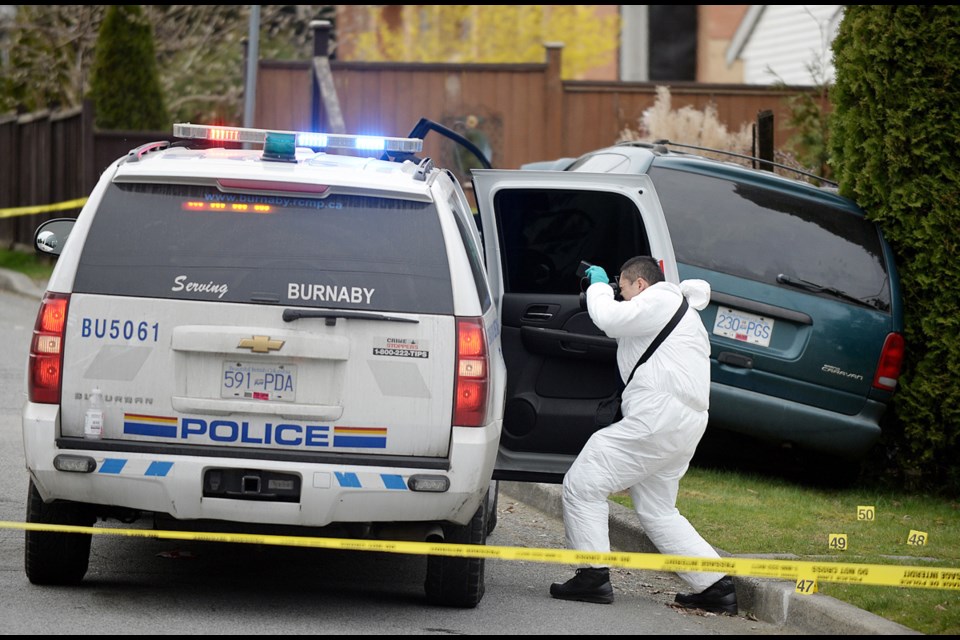B.C.’s police watchdog is apologizing for taking more than three years to report on two police shootings in Burnaby in March 2015 but says it will do better in the future thanks to more resources, improved organizational efficiency and an improved office culture.
The Independent Investigations Office of B.C. (IIO) was called to Burnaby three times in March 2015 for officer-involved shootings.
Two of those incidents, on March 1 and March 20, are now the oldest cases on the police watchdog’s books.
“Both of these investigations have been underway for over three years and the protracted nature of these cases is unacceptable,” Deputy Commissioner Brenda Butterworth-Carr, the RCMP’s commanding officer in B.C., told the NOW in an emailed statement. “The years of uncertainty for our police officers raises numerous concerns. While we continue to support independent oversight, in order to ensure that public and police trust and confidence is maintained, this oversight needs to occur in a timely and professional manner.”
On March 1, 2015, Burnaby RCMP officers were on patrol when they came across an alleged robbery in progress at the 7-Eleven at Canada Way and Edmonds Street. The officers tried to arrest two male suspects, but the men fled in a vehicle, ramming a police vehicle, according to an RCMP press release at the time.
Shots were fired, and the suspects drove off.
Police found the suspect vehicle after it crashed near Canada Way and Rosewood Avenue.
One of the suspects was found nearby suffering from a serious injury, possibly caused by a gunshot.
On March 20, at about 8 p.m., officers responded to calls of a man with a gun in the 9300 block of Salish Court.
He was located and reportedly was in distress, threatening himself and then the officers, according to an IIO press release at the time.
Officers fired their weapons and the man sustained a gunshot injury.
When asked why it’s taken the police watchdog more than three years to close the cases, Ron MacDonald, the chief civilian director of the IIO, said it’s difficult to pinpoint reasons for specific cases but that a general backlog of files had built up because the office, after its creation in 2012, had had “a variety of internal issues” – largely “personality-driven” management issues – that led to rapid investigator turnover.
Those issues had been mostly dealt with before MacDonald took over in October 2017, he said, and the IIO is now operating on an even keel as far as retaining investigators.
The latest provincial budget also included an extra $1.1 million for the office, which MacDonald said will allow him to hire more investigators and another manager to help the chief of investigations with audits and issues of timeliness.
The office has also instituted other efficiencies, including getting MacDonald involved in decision making on files earlier, having more than one person help in the writing of public reports and making those reports shorter.
“They will contain all the relevant facts on both sides of the story and our conclusions, but they’re not going to be 22- to 25- or 30-page documents as they once were,” MacDonald said.
The director pointed to improvements in the IIO’s efficiency, citing recent cases, like a November 2017 incident that saw an Abbotsford police officer fatally shot and a suspect injured by police.
The watchdog reported on that file in just three months.
The IIO is now looking to the future, according to MacDonald, but he said he appreciates the impact the delay of old files has had on those involved – including those who have waited three years for the Burnaby cases to be resolved.
“That’s too long,” he said. “…at the end of the day, we’re continuing to strive for the ultimate goal, and that’s to make sure we get it right, but getting it right shouldn’t take as long as it did.
MacDonald said the two cases are “in the final stages of completion.”



